プロジェクトProjects
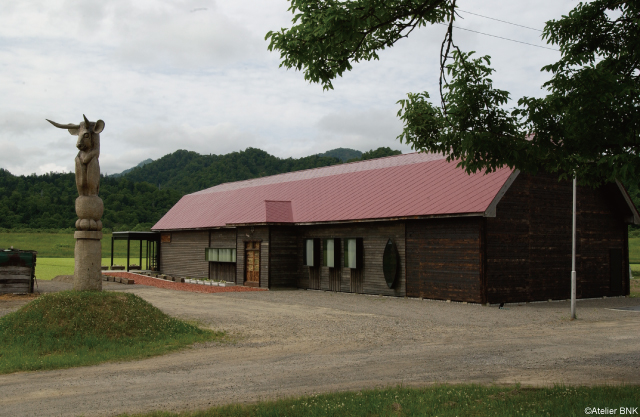
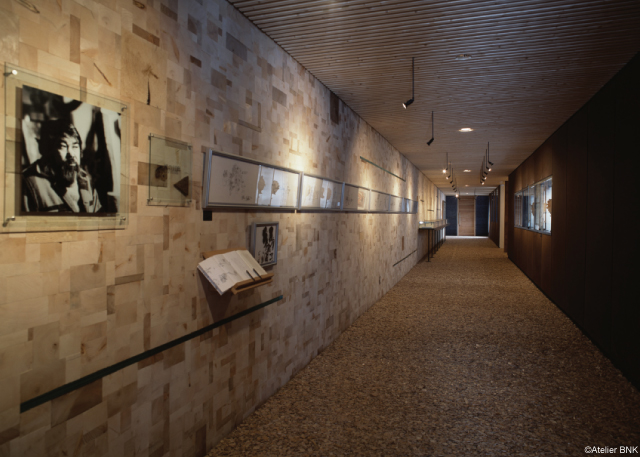
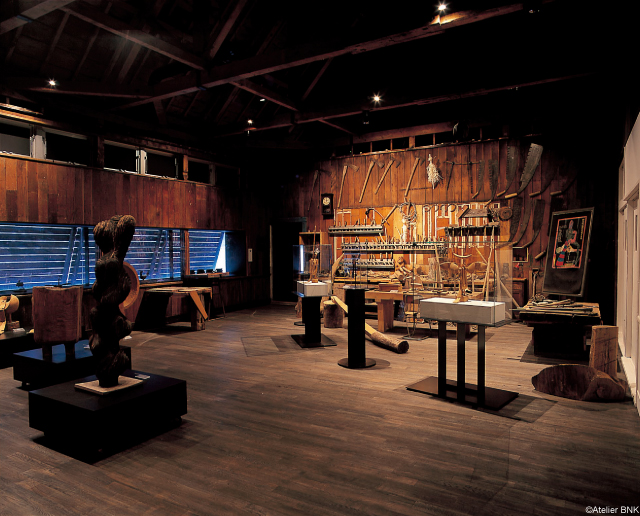
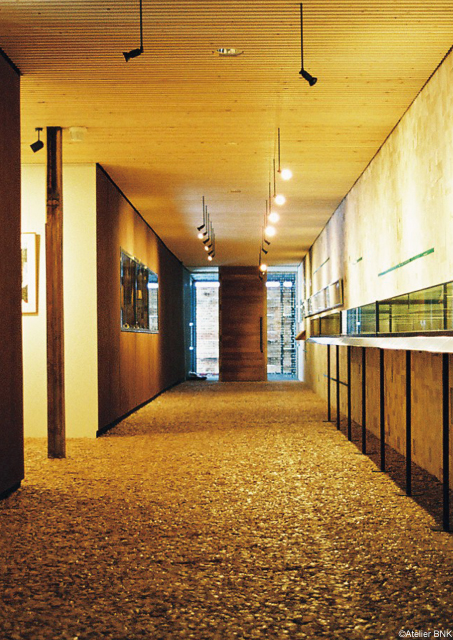
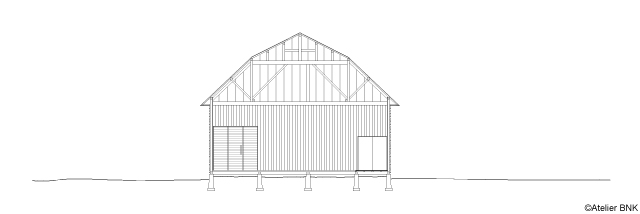
エコミュージアムおさしま
2002
北海道中川郡音威子府村
構 造:木造
階 数:地上1階
延床面積:426㎡
アイユーエンジニアリング + ニシブエンジニアリング( 設備設計 )
この小さな建物は、1935 年に建てられた「筬島小学校」であり、後に彫刻家砂澤ビッキが住居、アトリエとして使っていた。それを改修・増築して、彼の作品や生き様を間近に感じられる記念館とした。
小学校の記憶
地域の人々にとってこの建物は、ビッキのアトリエよりも小学校としての時間が長い訳で、郷土の歴史的建造物と言える。計画にあたって大切にしたことの一つは、校舎の再生という態度である。旧校舎の空間構成(玄関、廊下、教室、校長先生の住居、体育館)を守りながら、それぞれの空間特性を活かして展示空間に置き換えていった。
アトリエの記憶
ビッキのここでの生活は多くの写真が残されており、その凄まじいエネルギーは見るものを圧倒する。彼が亡くなった後でも、空間の随所に彼が木を愛撫した空気が残っていた。それを乱さぬよう、改修の素材は、彼が愛した木(年輪木レンガ、木チップ、木ルーバー)と木に命を吹き込む鑿―鉄―(鉄板錆仕上げ、スチールプレートサッシ)という対比をテーマとした。
Eco Museum Osashima
Otoineppu, Hokkaido
Structure:W
Floor:1 story
Floor Area:426㎡
IU Engineering+Nishibu Engineering( Mechanical & Electrical Engineering )
This small building was built as Osashima Elementary School in 1935, and later became the home and studio of sculptor Bikky Sunazawa. Our design renovated and extended the building to create a memorial museum that allows visitors an intimate sense of Sunazawa’s works and way of life.
Remembering the elementary school
To the local people, this building is part of the region’s history as it served as an elementary school for an even longer period than it served as Sunazawa’s studio. Regeneration of the school building was therefore an important part of the design. While preserving the spatial composition of the old school building (vestibule, corridor, classrooms, principal’s residence, gymnasium), our design took advantage of the characteristics of each space to turn them into exhibition spaces.
Remembering the studio
Many photographs showing the life that Sunazawa lived in this building remain, and they give an overwhelming sense of the tremendous energy he embodied. Even after his death, his passion for wood sculpture endured in the atmosphere of the space. With the aim of preserving this atmosphere, the renovation materials were chosen based on the contrast between his beloved wood (wood bricks with tree rings, wood chips, wooden louvers) and his chisel—iron—that brought wood to life as a sculpture (rust-finished iron sheets, steel plate sash windows).
